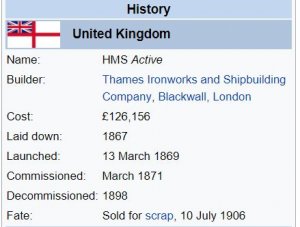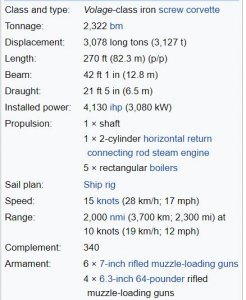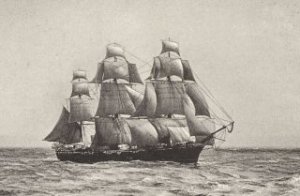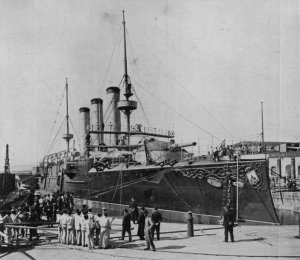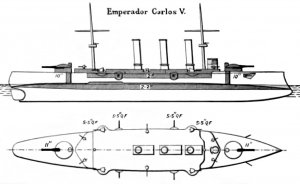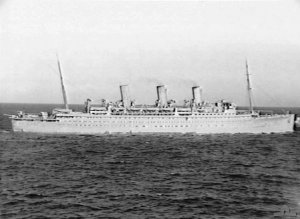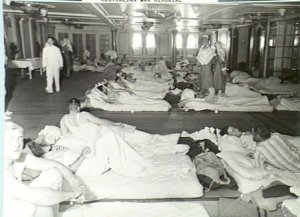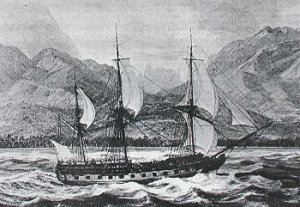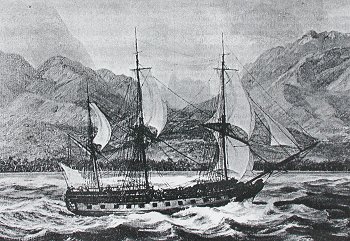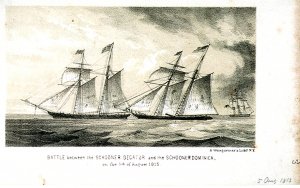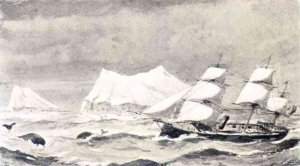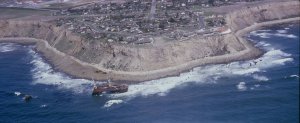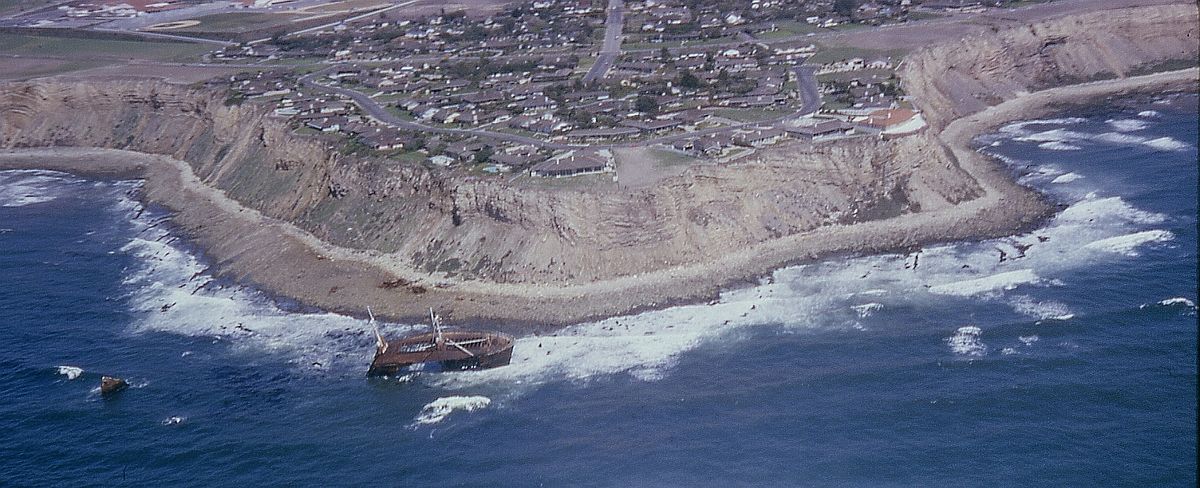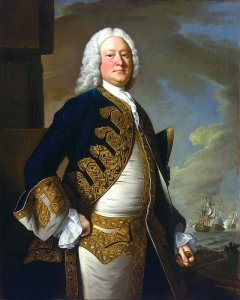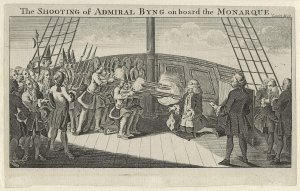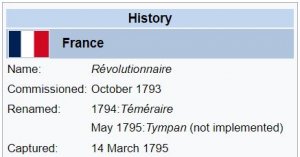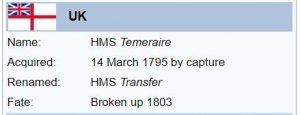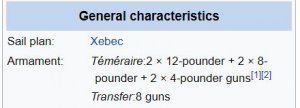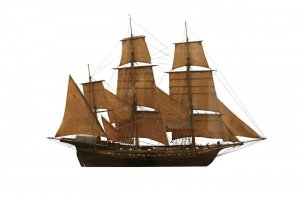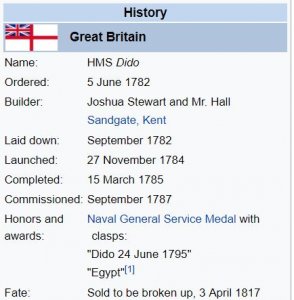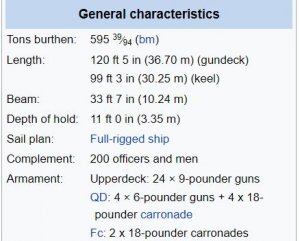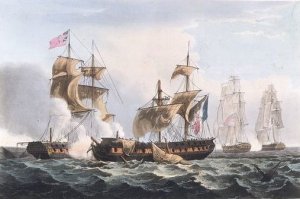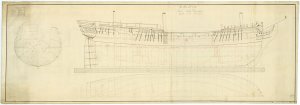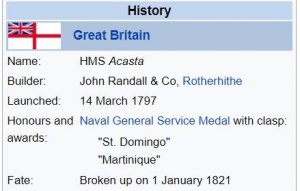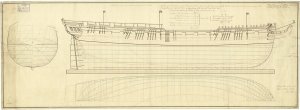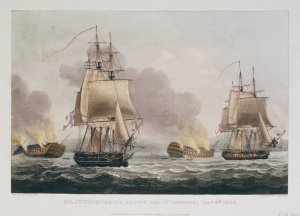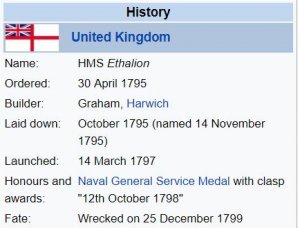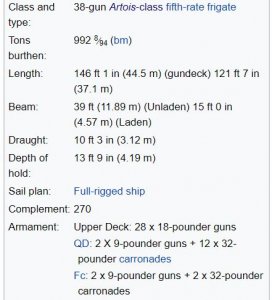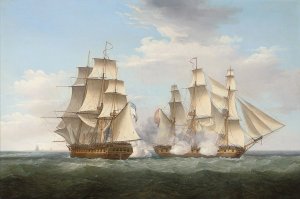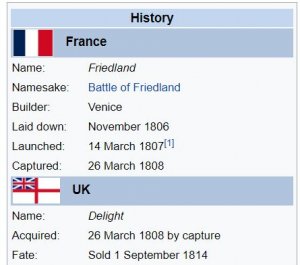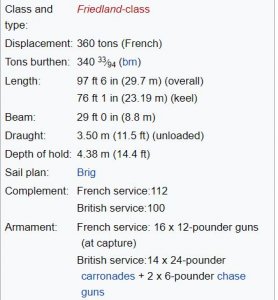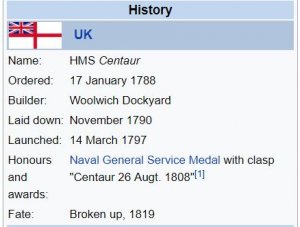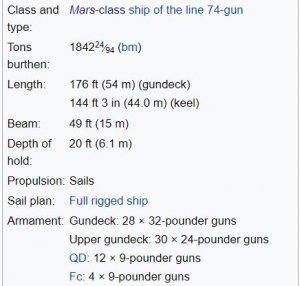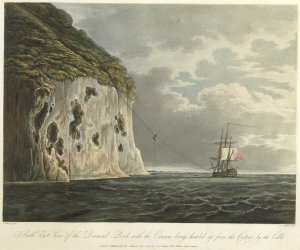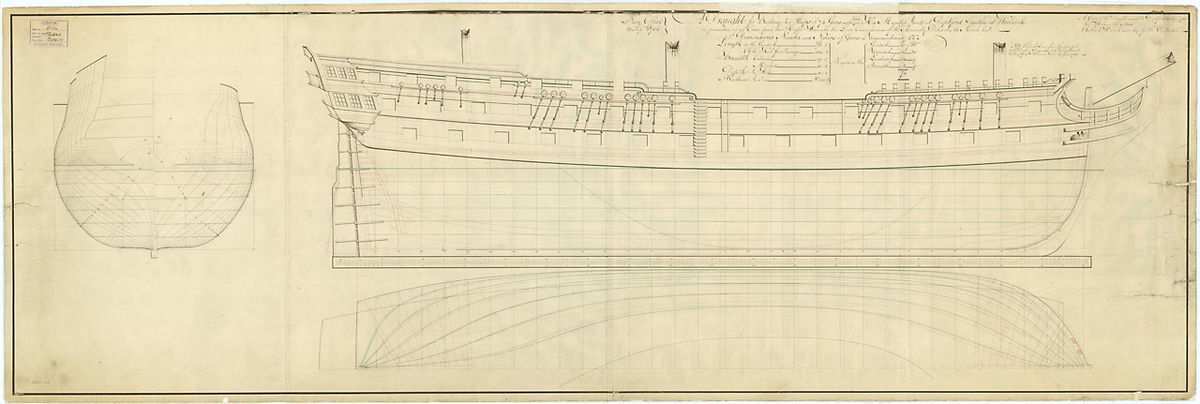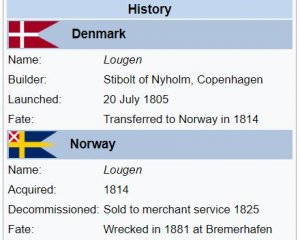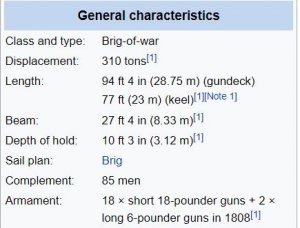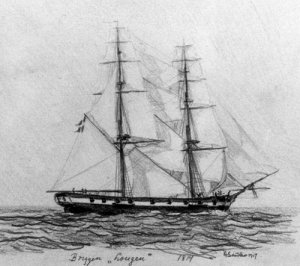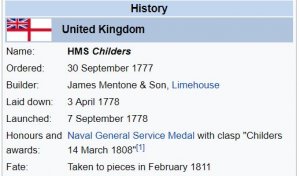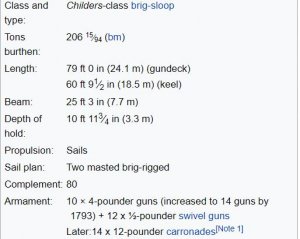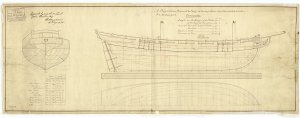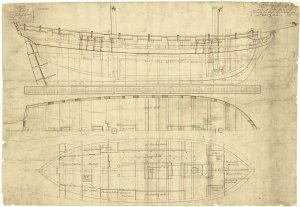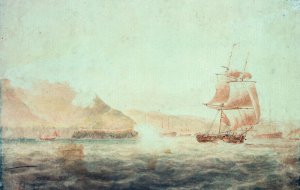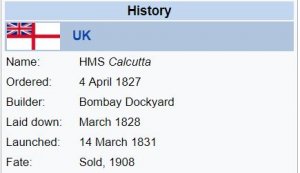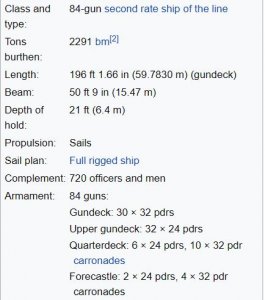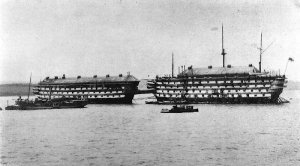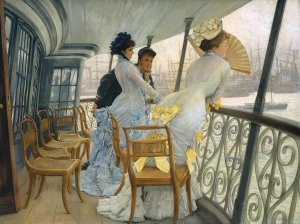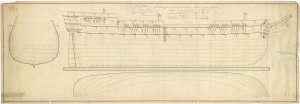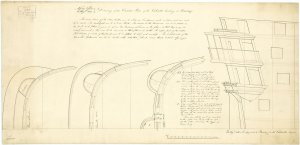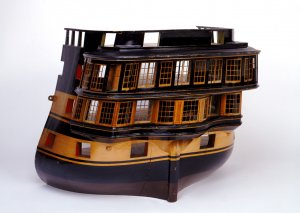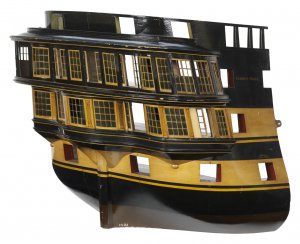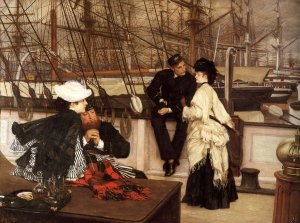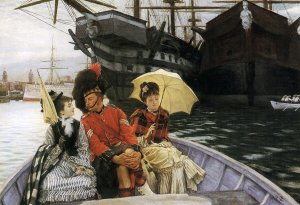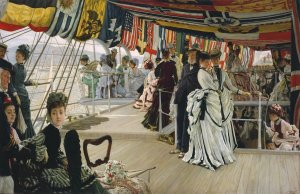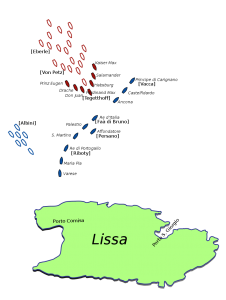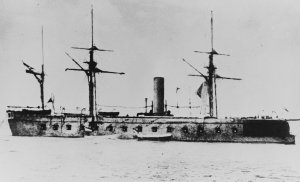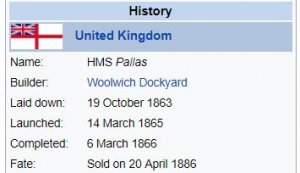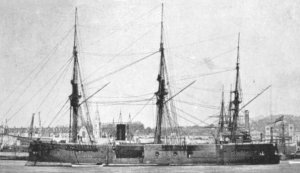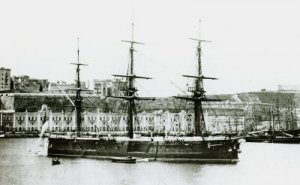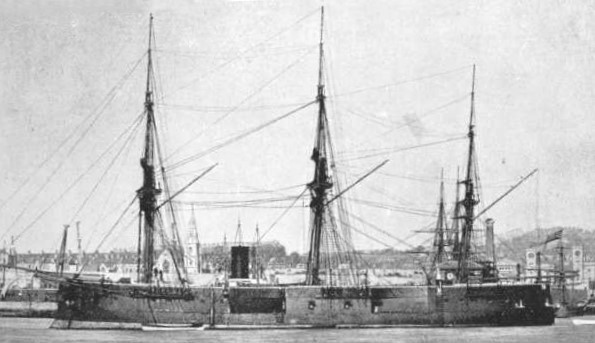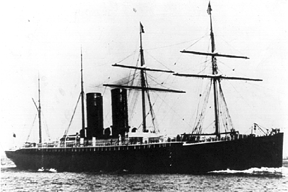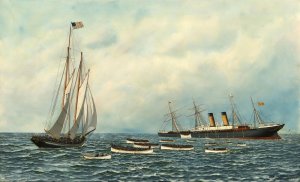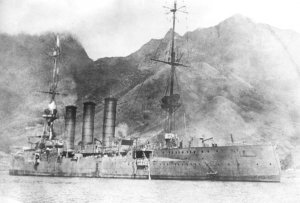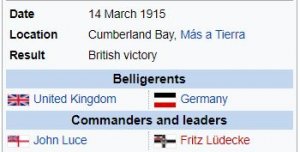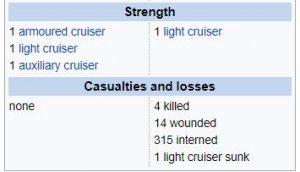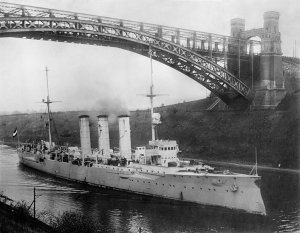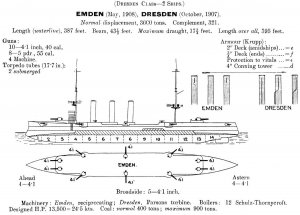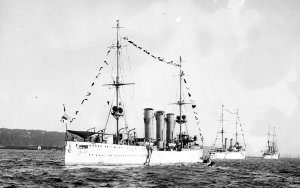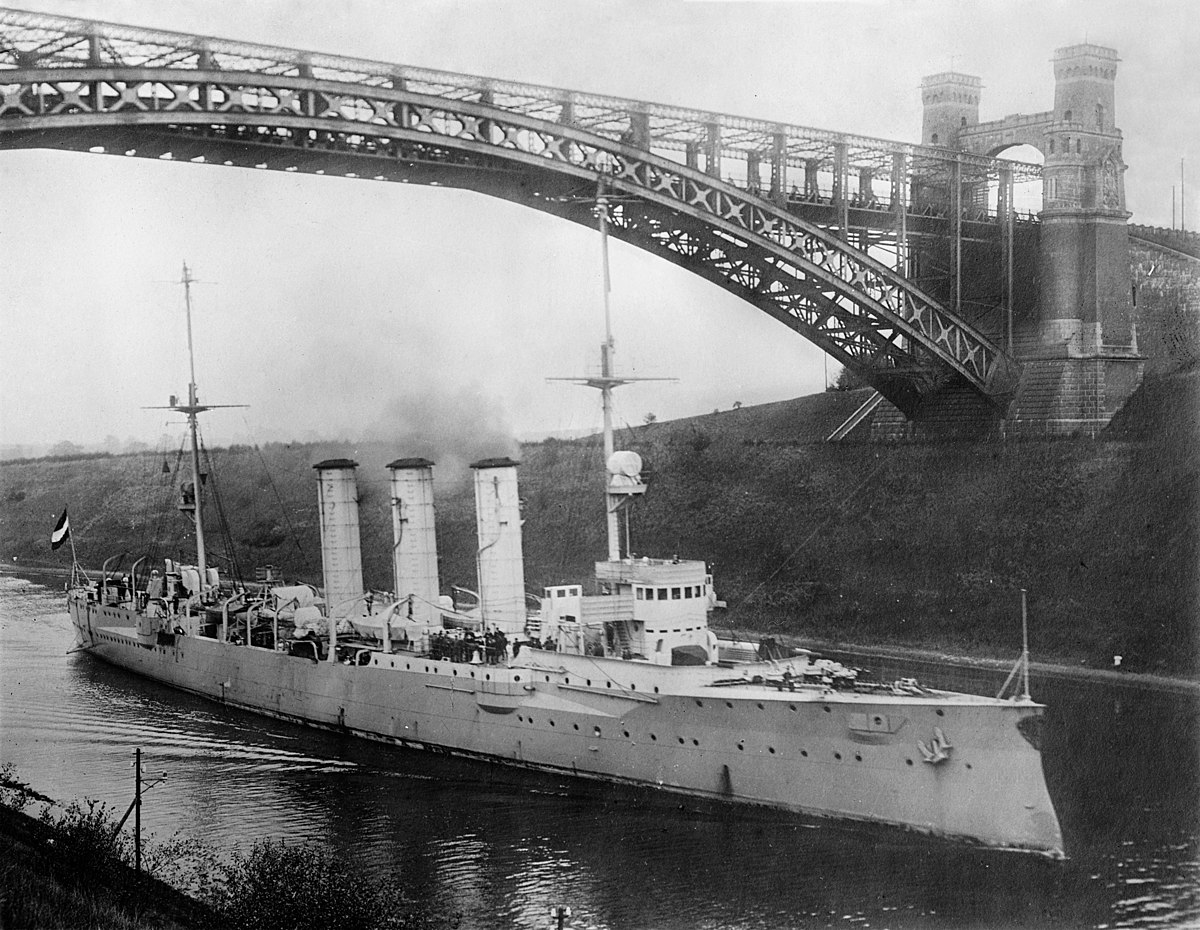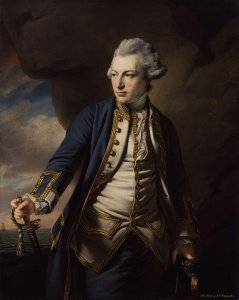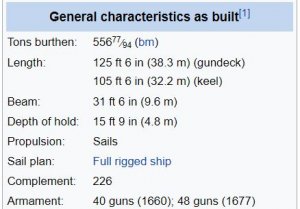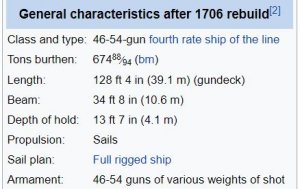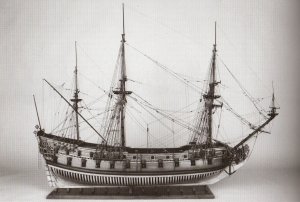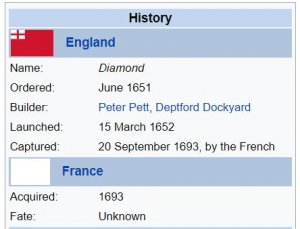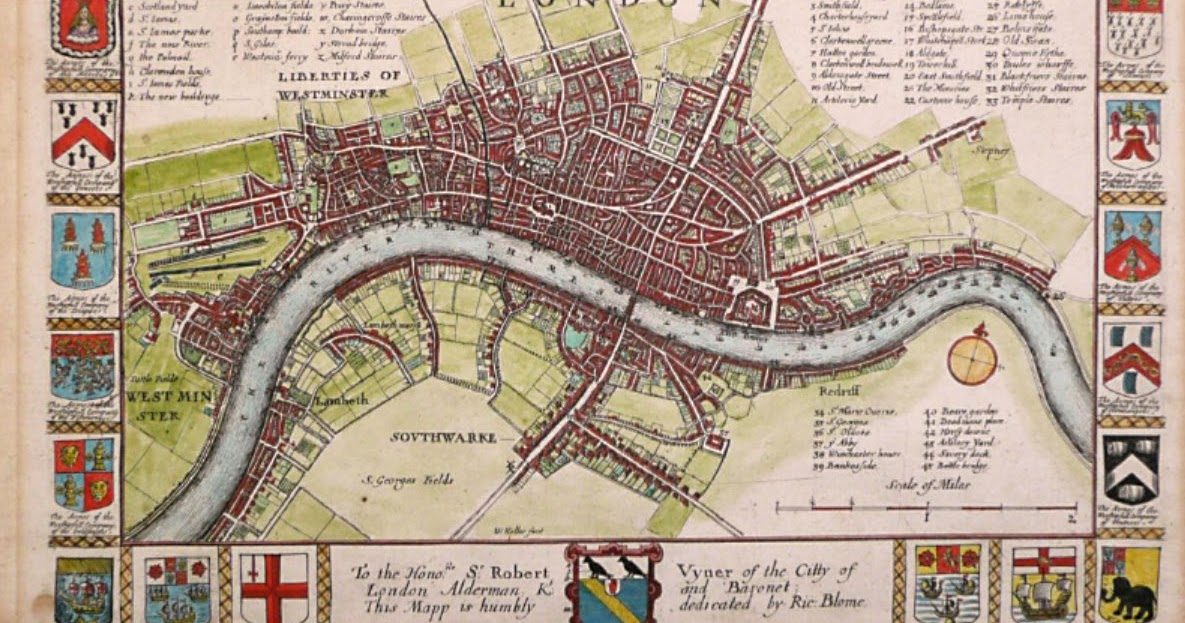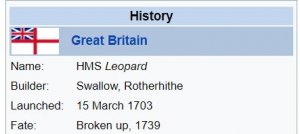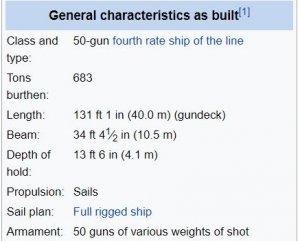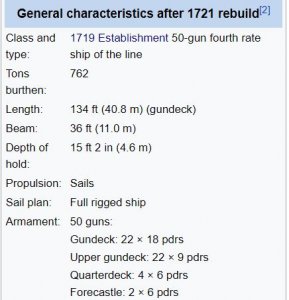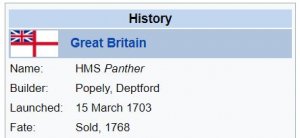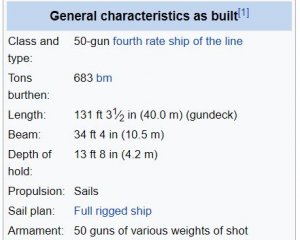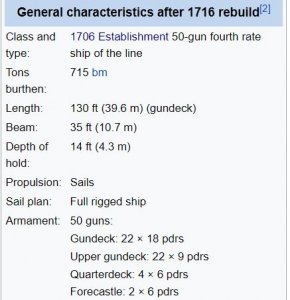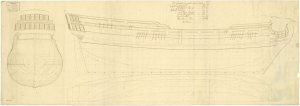Today in Naval History - Naval / Maritime Events in History
13 March 1811 - Battle of Lissa (1811) - Part III - captured and destroyed ships
Corona was a 40-gun Pallas-class frigate of the Italian Navy. The French built her in Venice in 1807 for the Venetian Navy. The British captured Corona at the Battle of Lissa and took her into the Royal Navy as HMS Daedalus. She grounded and sank off Ceylon in 1813 while escorting a convoy.
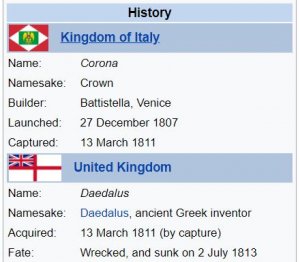
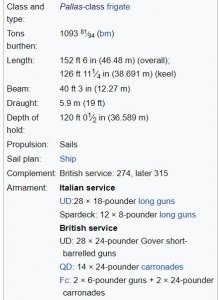
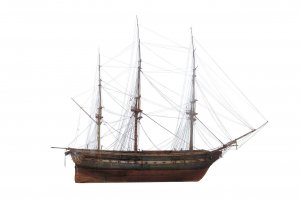
Hortense, sister-ship of Corona
Italian Navy
Corona was initially built in Venice for the Venetian Navy of the Napoleonic Kingdom of Italy, using French plans. She was at Venice in 1809.
Under Captain Nicolò Pasqualigo she served as part of the Franco-Italian squadron operating in the Adriatic in 1811 under Commodore Bernard Dubourdieu. On 22 October she entered the port of Lissa and there captured several vessels.
Corona was one of the ships that Dubourdieu lost at Lissa on 13 March 1811 during the battle that resulted in his death. Corona's captain was also wounded and taken prisoner in the battle: in all she lost some 200 men killed and wounded. Following her capture by Active, a fire destroyed much of Corona's upper works and killed members of her crew and five members of the British prize crew before they could extinguish it. In 1847 the Admiralty authorized the issuance of the Naval General Service Medal with clasp "Lissa" to the still living survivors of the battle.
Royal Navy
Her captors took her to Malta and then to Britain where they renamed her Daedalus, Daedalus having just been broken up, and took her into the Royal Navy. She was laid up for a year while her battle damage was repaired. The British considered her weakly built and considered giving her 32-pounder carronades in her battery to reduce the weight of her armament. Instead, they gave her 24-pounder Gover short-barreled guns. In October 1812 she was finally readied for sea under Captain Murray Maxwell, fresh from his own victory in the Adriatic.
Daedalus sailed for the East Indies on 29 January 1813. On 1 July 1813 Daedalus was escorting a number of East Indiamen off Ceylon near Pointe de Galle. Maxwell set a course for Madras that was supposed to take her clear of all shoals. When he believed he was some eight miles off shore he changed course. At 8am on 2 July she grounded on a shoal. Although she hit gently, she had irreparably damaged her bottom. Maxwell and his crew attempted numerous remedies but could not save Daedalus and the Indiamen took off her crew. Within five minutes of Maxwell's departure Daedalus sank. The subsequent court martial ruled that the master, Arthur Webster, had failed to exercise due diligence in that he had failed to take constant depth soundings; the court ordered that he be severely reprimanded.
Favorite was the 44-gun Pallas-class frigate Favorita of the Navy of the Kingdom of Italy. The Italians exchanged her to the French Navy for the three brigs Cyclope, Écureuil and Mercure.
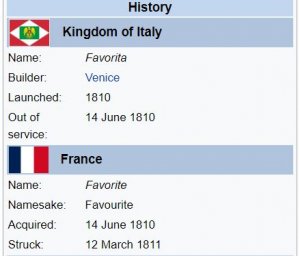
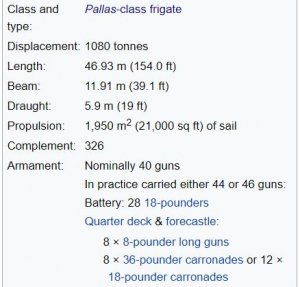
On 12 March 1811, Favorite, under Bernard Dubourdieu, led a frigate squadron to raid the British commerce raider base of the island of Lissa. The squadron encountered William Hoste's frigate squadron, leading to the Battle of Lissa.
In the ensuing fight, Favorite attempted to board the British flagship HMS Amphion, distancing herself from the rest of her squadron. As the two ships neared, Amphion discharged a howitzer full of bullets which rendered a large number of the French casualties. Dubourdieu himself was killed at 9:10. Favorite's first officer and second officers were killed as they attempted again to board Amphion. As she sailed around Amphion in an attempt to rake her and take her in a crossfire with the other French frigates, Favorite was outmanoeuvred and ran aground.
Her crew set her on fire, and she exploded as the battle was still ongoing. Led by colonel Gifflinga, the crew of Favorite captured a coastal boat at Port St George which they used to flee to Lessina.
Flore was a 44-gun Armide-class frigate of the French Navy.
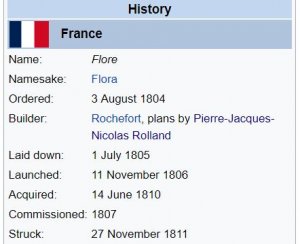
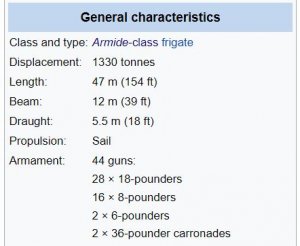
Service history
In 1808, she was part of Ganteaume's squadron that cruised in the Mediterranean.
On 12 March 1811, she was part of Bernard Dubourdieu's squadron sailing to raid the British commerce raider base of the island of Lissa. The squadron encountered William Hoste's frigate squadron, leading to the Battle of Lissa.
In the ensuing fight, Flore was distanced by her flagship Favorite, which engaged the British flagship HMS Amphion, and ran aground. Flore and Bellona caught on and engaged Amphion in a crossfire. Amphion outmanoeuvred Flore and raked her for ten minutes, after which Flore struck her colours.
The battle still raging, the British failed to send a capture crew aboard, and Flore eventually joined the surviving Carolina and Danaé and fleeing to Ragusa.
Flore was wrecked in a tempest off Chioggia on 30 November 1811, with the loss of 75. Her commanding officer, Frigate CaptainLissilour, was acquitted by the court martial.
A 1⁄48 shipyard model of Flore, originally part of the Trianon model collection, is on display at the Musée national de la Marine in Paris.
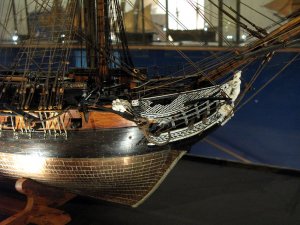
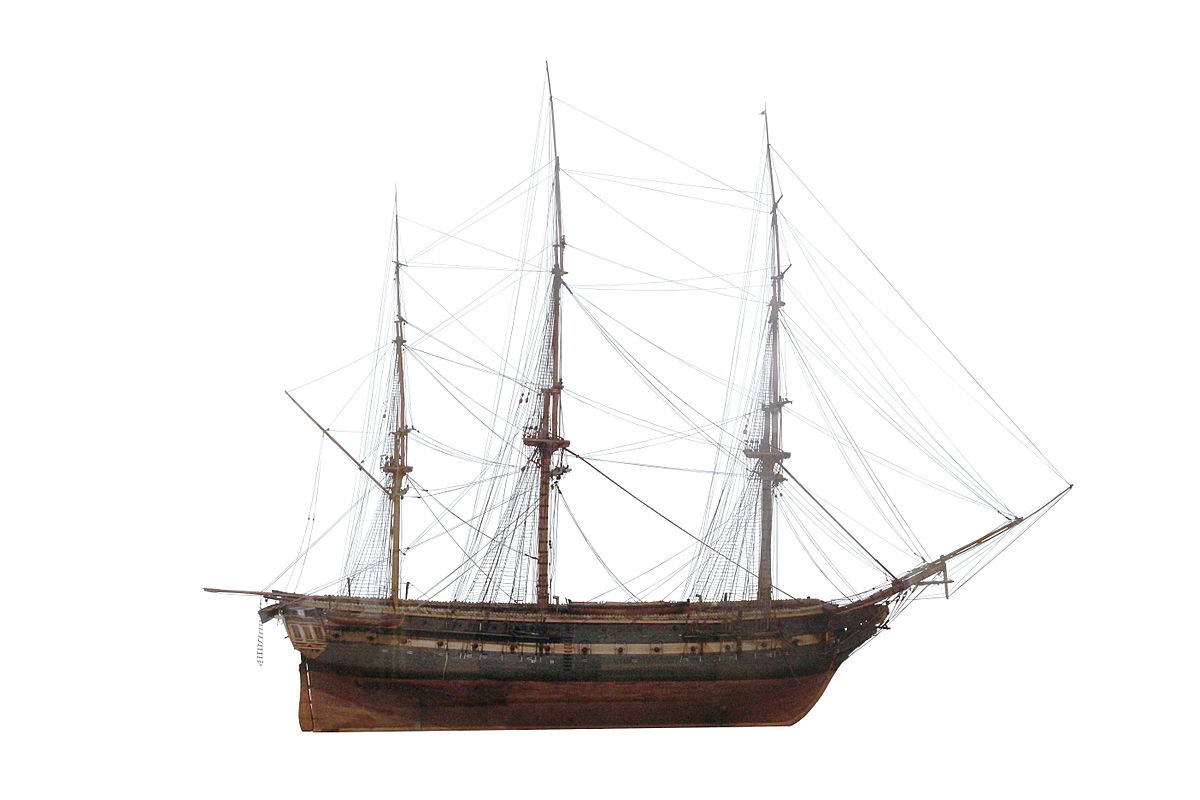
 en.wikipedia.org
en.wikipedia.org

 en.wikipedia.org
en.wikipedia.org
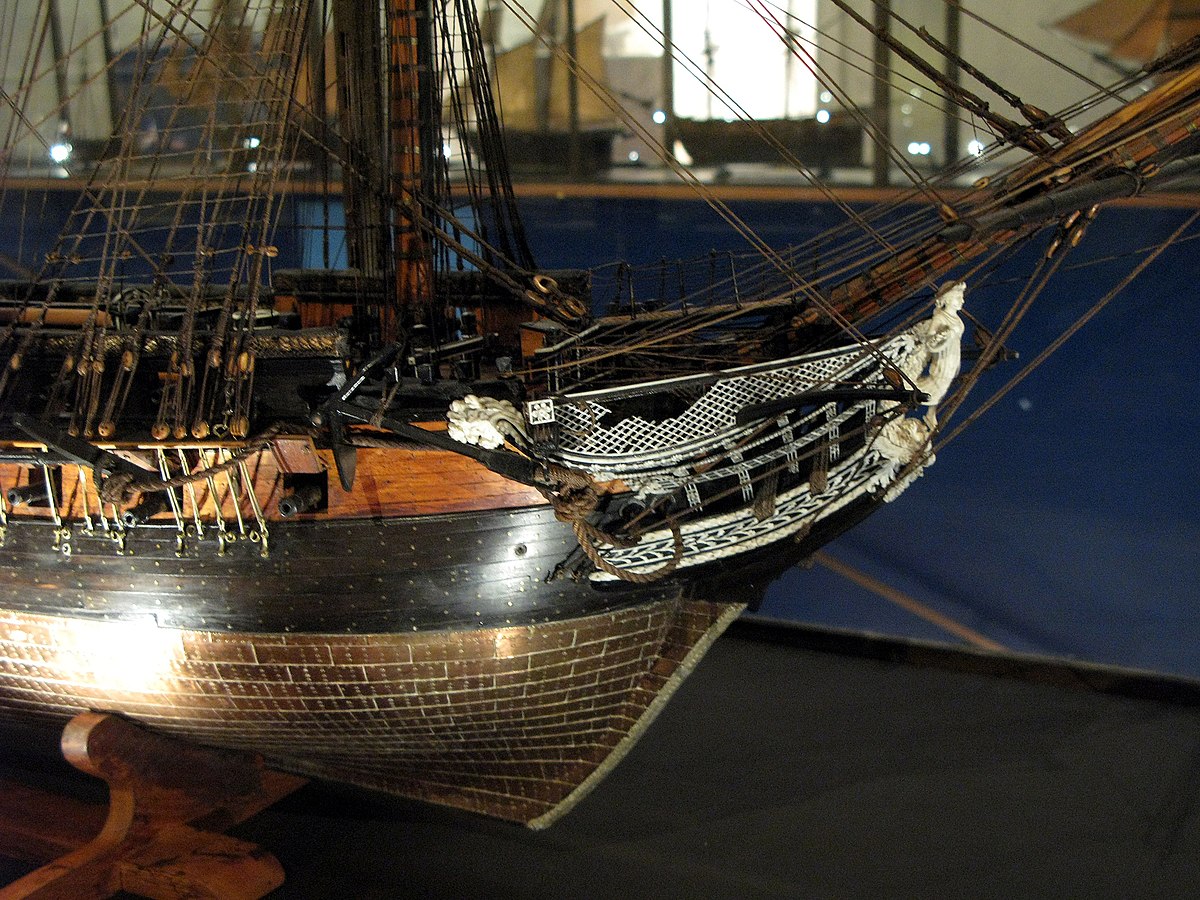
 en.wikipedia.org
en.wikipedia.org
13 March 1811 - Battle of Lissa (1811) - Part III - captured and destroyed ships
Corona was a 40-gun Pallas-class frigate of the Italian Navy. The French built her in Venice in 1807 for the Venetian Navy. The British captured Corona at the Battle of Lissa and took her into the Royal Navy as HMS Daedalus. She grounded and sank off Ceylon in 1813 while escorting a convoy.



Hortense, sister-ship of Corona
Italian Navy
Corona was initially built in Venice for the Venetian Navy of the Napoleonic Kingdom of Italy, using French plans. She was at Venice in 1809.
Under Captain Nicolò Pasqualigo she served as part of the Franco-Italian squadron operating in the Adriatic in 1811 under Commodore Bernard Dubourdieu. On 22 October she entered the port of Lissa and there captured several vessels.
Corona was one of the ships that Dubourdieu lost at Lissa on 13 March 1811 during the battle that resulted in his death. Corona's captain was also wounded and taken prisoner in the battle: in all she lost some 200 men killed and wounded. Following her capture by Active, a fire destroyed much of Corona's upper works and killed members of her crew and five members of the British prize crew before they could extinguish it. In 1847 the Admiralty authorized the issuance of the Naval General Service Medal with clasp "Lissa" to the still living survivors of the battle.
Royal Navy
Her captors took her to Malta and then to Britain where they renamed her Daedalus, Daedalus having just been broken up, and took her into the Royal Navy. She was laid up for a year while her battle damage was repaired. The British considered her weakly built and considered giving her 32-pounder carronades in her battery to reduce the weight of her armament. Instead, they gave her 24-pounder Gover short-barreled guns. In October 1812 she was finally readied for sea under Captain Murray Maxwell, fresh from his own victory in the Adriatic.
Daedalus sailed for the East Indies on 29 January 1813. On 1 July 1813 Daedalus was escorting a number of East Indiamen off Ceylon near Pointe de Galle. Maxwell set a course for Madras that was supposed to take her clear of all shoals. When he believed he was some eight miles off shore he changed course. At 8am on 2 July she grounded on a shoal. Although she hit gently, she had irreparably damaged her bottom. Maxwell and his crew attempted numerous remedies but could not save Daedalus and the Indiamen took off her crew. Within five minutes of Maxwell's departure Daedalus sank. The subsequent court martial ruled that the master, Arthur Webster, had failed to exercise due diligence in that he had failed to take constant depth soundings; the court ordered that he be severely reprimanded.
Favorite was the 44-gun Pallas-class frigate Favorita of the Navy of the Kingdom of Italy. The Italians exchanged her to the French Navy for the three brigs Cyclope, Écureuil and Mercure.


On 12 March 1811, Favorite, under Bernard Dubourdieu, led a frigate squadron to raid the British commerce raider base of the island of Lissa. The squadron encountered William Hoste's frigate squadron, leading to the Battle of Lissa.
In the ensuing fight, Favorite attempted to board the British flagship HMS Amphion, distancing herself from the rest of her squadron. As the two ships neared, Amphion discharged a howitzer full of bullets which rendered a large number of the French casualties. Dubourdieu himself was killed at 9:10. Favorite's first officer and second officers were killed as they attempted again to board Amphion. As she sailed around Amphion in an attempt to rake her and take her in a crossfire with the other French frigates, Favorite was outmanoeuvred and ran aground.
Her crew set her on fire, and she exploded as the battle was still ongoing. Led by colonel Gifflinga, the crew of Favorite captured a coastal boat at Port St George which they used to flee to Lessina.
Flore was a 44-gun Armide-class frigate of the French Navy.


Service history
In 1808, she was part of Ganteaume's squadron that cruised in the Mediterranean.
On 12 March 1811, she was part of Bernard Dubourdieu's squadron sailing to raid the British commerce raider base of the island of Lissa. The squadron encountered William Hoste's frigate squadron, leading to the Battle of Lissa.
In the ensuing fight, Flore was distanced by her flagship Favorite, which engaged the British flagship HMS Amphion, and ran aground. Flore and Bellona caught on and engaged Amphion in a crossfire. Amphion outmanoeuvred Flore and raked her for ten minutes, after which Flore struck her colours.
The battle still raging, the British failed to send a capture crew aboard, and Flore eventually joined the surviving Carolina and Danaé and fleeing to Ragusa.
Flore was wrecked in a tempest off Chioggia on 30 November 1811, with the loss of 75. Her commanding officer, Frigate CaptainLissilour, was acquitted by the court martial.
A 1⁄48 shipyard model of Flore, originally part of the Trianon model collection, is on display at the Musée national de la Marine in Paris.


French frigate Corona (1807) - Wikipedia

French frigate Favorite (1810) - Wikipedia



